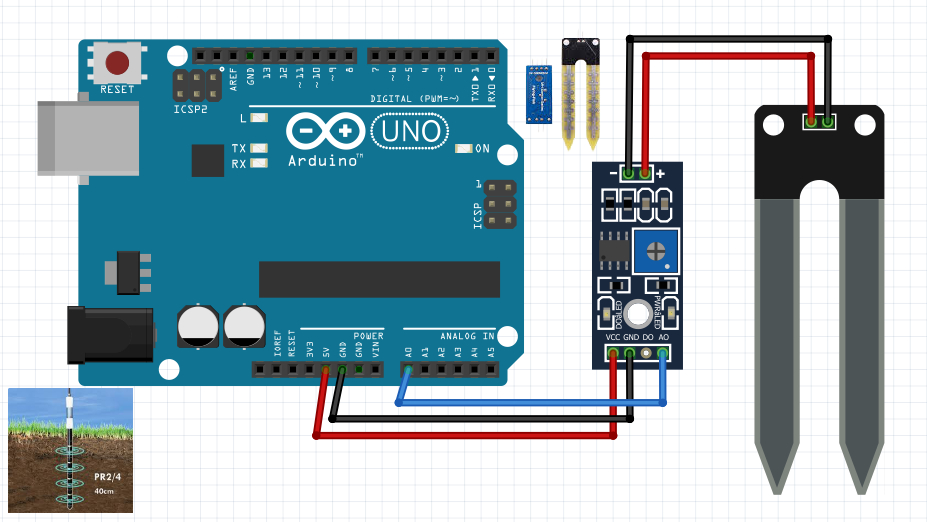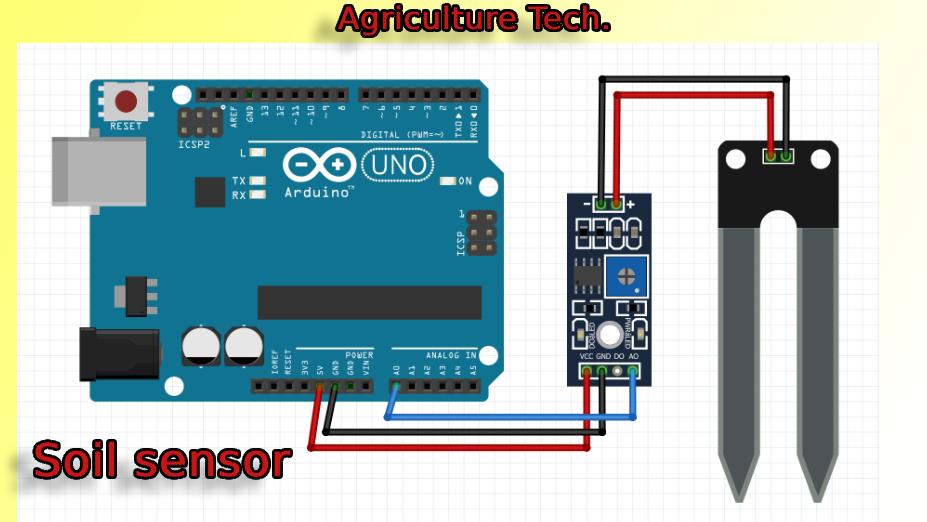Explore the game-changing role of soil sensors in agriculture. Real-time tracking of soil moisture, pH, and nutrients leads to smarter, more sustainable farming.
Agriculture is the backbone of human civilization, and as the global population rises, the demand for food is escalating. To meet these growing needs sustainably, technology is being integrated into farming practices. Among the revolutionary technologies in precision agriculture, soil sensors have emerged as vital tools. These devices enable farmers and agronomists to monitor essential soil parameters such as moisture content, pH levels, and nutrient availability in real-time, helping in making data-driven decisions for better crop management.
Table of Contents
What Are Soil Sensors?
Soil sensors are electronic devices used to measure various parameters of soil in real-time. These sensors collect data on moisture, pH, temperature, and nutrient concentrations such as nitrogen (N), phosphorus (P), and potassium (K). The data collected helps in understanding soil health and its suitability for different crops.
Unlike traditional soil testing that requires laboratory analysis, soil sensors provide instant, continuous, and location-specific feedback, thus enabling precision farming.
Key Soil Parameters Tracked by Sensors
1. Soil Moisture
Soil moisture sensors measure the water content in the soil. Monitoring moisture is crucial for irrigation management, ensuring that plants receive the right amount of water at the right time.
2. Soil pH
Soil pH indicates the acidity or alkalinity of the soil. The ideal pH range for most crops is between 6.0 and 7.5. Monitoring pH helps in determining soil amendments like lime or sulfur.
3. Nutrient Levels
Nutrient sensors detect the presence and concentration of essential nutrients, including:
- Nitrogen (N): Vital for vegetative growth.
- Phosphorus (P): Important for root and flower development.
- Potassium (K): Affects water regulation and resistance to diseases.
Some advanced sensors also monitor secondary nutrients (e.g., calcium, magnesium) and micronutrients (e.g., iron, zinc).

Types of Soil Sensors
1. Capacitive Soil Moisture Sensors
These sensors use dielectric permittivity to estimate moisture levels. They are known for high accuracy and low power consumption.
2. Tensiometers
These measure the tension or suction the plant roots must exert to extract water from the soil. Ideal for irrigation planning.
3. Resistive Soil Moisture Sensors
They measure electrical resistance, which changes based on soil moisture. Though cost-effective, they are less accurate in varying soil types.
4. pH Sensors
These use glass electrodes or ion-selective field-effect transistors (ISFETs) to determine hydrogen ion concentration in the soil.
5. Ion-Selective Electrodes (ISEs)
ISEs are used to measure specific ions like nitrate (NO3-), ammonium (NH4+), and potassium (K+). They offer high precision but are expensive.
6. Optical and Spectral Sensors
Used to detect nutrient levels by analyzing light reflectance or absorption, these are non-invasive and can cover larger areas via drones or satellites.
How Soil Sensors Work
Soil sensors are generally embedded in the ground at specific depths. They function through the following steps:
- Data Collection: Sensors measure physical or chemical changes (e.g., moisture, pH, ion concentration).
- Signal Conversion: These changes are converted into electrical signals.
- Transmission: The signals are sent to a data logger, IoT module, or cloud storage.
- Analysis: Collected data is analyzed via software platforms or mobile apps.
- Actionable Insights: Farmers receive real-time recommendations on irrigation, fertilization, and soil amendments.
Real-Time Monitoring and IoT Integration
Modern soil sensors are integrated with Internet of Things (IoT) technologies, enabling remote monitoring and automation.
Features of IoT-Enabled Soil Sensor Systems:
- Wireless Data Transmission: Bluetooth, Wi-Fi, or LoRa-based.
- Cloud Storage: Real-time data upload and analytics.
- Mobile Alerts: Notifications for critical soil conditions.
- Data Visualization: Graphs and heatmaps to understand spatial variations.
Applications of Soil Sensors
1. Precision Agriculture
Soil sensors support site-specific management, where inputs like water and fertilizers are optimized per zone.
2. Greenhouse Management
Monitoring soil in greenhouses ensures controlled and efficient resource usage.
3. Urban Gardening and Hydroponics
Real-time soil and nutrient monitoring in urban setups or hydroponic farms aids in maximizing yields in limited spaces.
4. Soil Health Monitoring
Continuous soil quality assessment helps in sustainable land management and erosion prevention.
5. Research and Development
Universities and agricultural research centers use soil sensors for experimental farming, crop trials, and climate impact studies.
Benefits of Soil Sensors
1. Increased Crop Yields
Data-driven decisions lead to optimized plant health, resulting in higher productivity.
2. Water Conservation
Moisture sensors help in applying precise irrigation, saving water and reducing utility costs.
3. Efficient Fertilizer Use
Real-time nutrient monitoring prevents over-fertilization, thus reducing chemical runoff and improving soil longevity.
4. Labor and Cost Savings
Automation reduces the need for manual soil sampling, cutting down labor costs and errors.
5. Environmental Sustainability
Sustainable use of resources contributes to ecological balance and reduces pollution.
6. Predictive Analytics
Long-term data helps in predicting crop behavior, pest outbreaks, and climate adaptation.
Challenges and Limitations
1. High Initial Costs
Advanced sensor systems can be expensive, particularly for small-scale farmers.
2. Calibration and Maintenance
Regular calibration is required for accurate readings, and sensor degradation can occur over time.
3. Data Complexity
Interpreting large datasets can be challenging without agronomic expertise or analytical tools.
4. Soil Variability
Soil heterogeneity may require multiple sensors per field, increasing the cost and complexity.
5. Power Requirements
Some systems require solar panels or battery replacements, especially in remote locations.
Top Manufacturers of Soil Sensors
- Decagon Devices (Now METER Group) – Known for accurate moisture sensors.
- Sentek Technologies – Offers multi-depth soil moisture and salinity sensors.
- Davis Instruments – Provides affordable sensors for hobby farmers.
- CropX – IoT-driven smart agriculture solutions.
- Teralytic – Offers 26-sensor probes that measure a wide range of soil parameters.
Future Trends in Soil Sensor Technology
1. AI-Driven Analytics
Integration of Artificial Intelligence will enhance predictive farming and decision-making.
2. Remote Sensing Integration
Combining soil sensors with satellite imagery and drones will provide holistic field insights.
3. Miniaturization and Affordability
Sensors will become smaller, cheaper, and more energy-efficient, increasing accessibility.
4. Blockchain for Data Security
To ensure data integrity and traceability, blockchain technology may be used in sensor networks.
5. Self-Calibrating Systems
Future sensors will have auto-calibration features to reduce maintenance needs.
Case Studies
Case Study 1: Smart Irrigation in California Vineyards
Vineyards in Napa Valley used soil moisture sensors connected to weather stations to optimize irrigation. Result: 20% water savings and 15% increase in grape yield.
Case Study 2: Nutrient Management in Indian Rice Fields
Indian farmers adopted nutrient sensors to detect nitrogen levels. By applying variable-rate fertilization, they reduced costs by 25% and improved yields.
Best Practices for Using Soil Sensors
- Correct Placement: Install at root depth for accurate readings.
- Regular Calibration: Especially in different soil types.
- Combine with Weather Data: For holistic decision-making.
- Use Mapping Tools: To visualize spatial variability.
- Train Staff: Ensure users understand how to interpret sensor data.
Frequently Asked Questions (FAQs)
Q1. Are soil sensors suitable for all soil types?
Most modern sensors work across a variety of soils but may require calibration for accuracy.
Q2. How often should soil sensors be calibrated?
Calibration is typically needed annually or after extreme weather events.
Q3. Can I install soil sensors myself?
Yes, many plug-and-play systems are available, but professional setup ensures accuracy.
Q4. What is the lifespan of a soil sensor?
Good-quality sensors last 3 to 10 years, depending on usage and environment.
Conclusion
Soil sensors are revolutionizing modern agriculture by enabling real-time monitoring of crucial soil parameters like moisture, pH, and nutrient levels. They empower farmers with data to make informed decisions that improve yields, conserve resources, and promote sustainable practices.
As the technology becomes more accessible and integrated with AI, IoT, and satellite systems, soil sensors will become indispensable tools for both smallholder farmers and large agribusinesses. Investing in soil sensors today is a step toward smarter, more resilient agriculture tomorrow.
